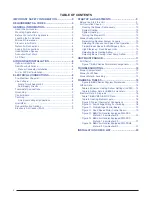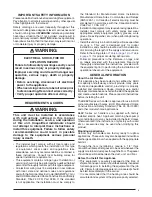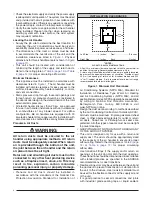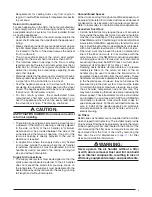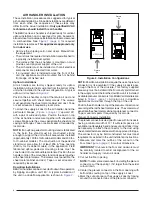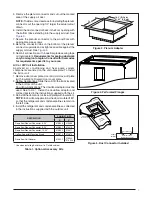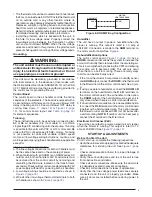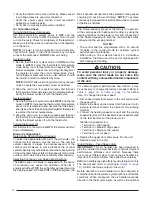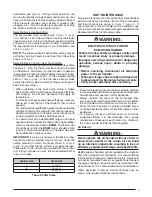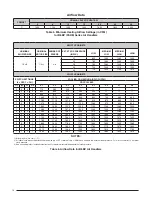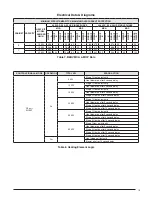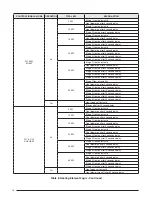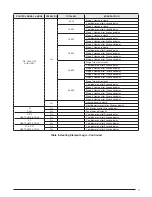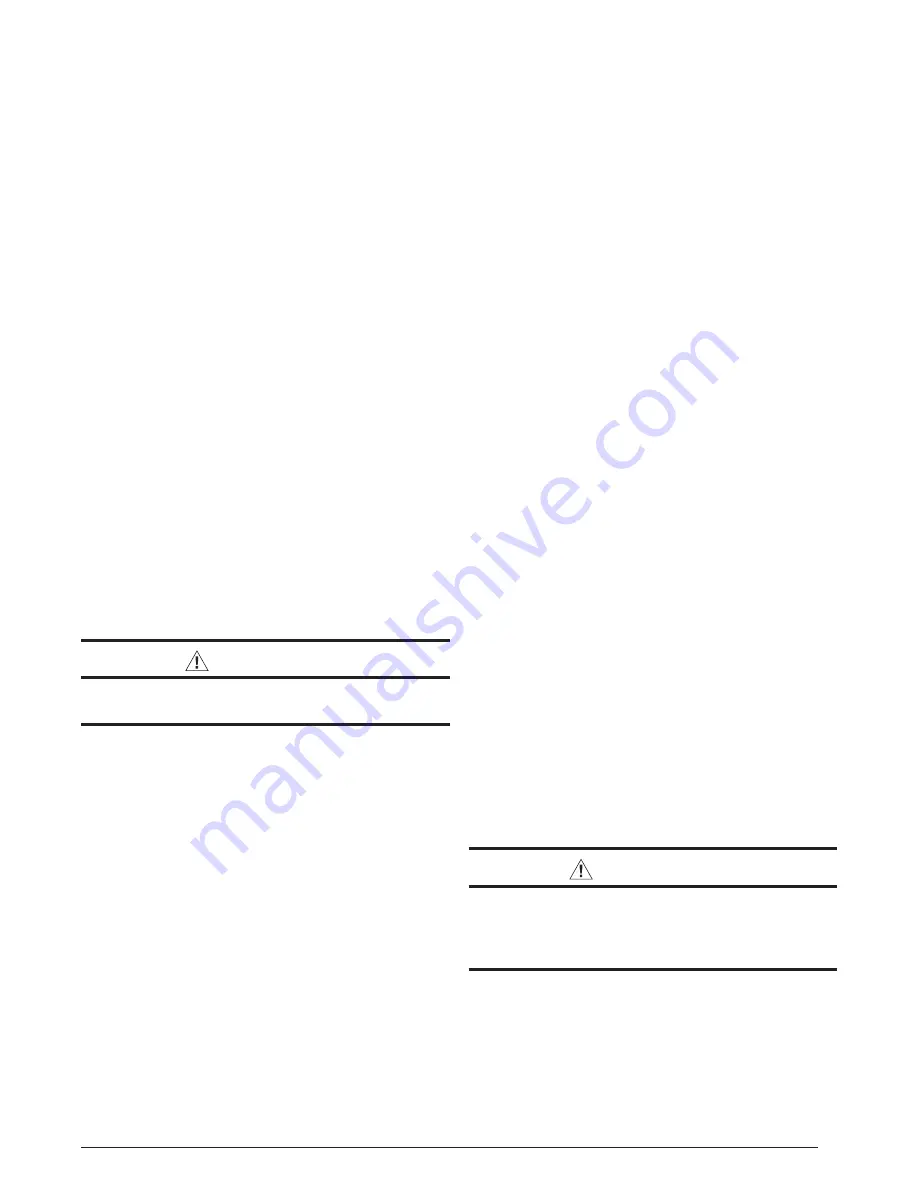
5
Requirements for sealing ducts vary from region to
region. Consult with local codes for requirements specific
to your area.
Return Air connections
For each application in the USA, the home manufacturer
shall comply with all of the following conditions to have
acceptable return air systems for closet installed forced
air heating appliances:
• regardless of the location, the return air opening into the
closet shall not be less than specified in the appliance’s
listing.
• means shall be provided to prevent inadvertent closure
by a flat object placed over the return air opening when
it is located in the floor of the closet (versus the vertical
front or side wall).
• The cross-sectional area of the return duct system
leading into the closet shall not be less than 390 in
2
.
• The total free area of openings in the floor or ceiling
registers serving the return air duct system must be at
least 352 in
2
. At least one register should be located
where it is not likely to be covered by carpeting, boxes
and other objects.
• materials located in the return duct system must have a
flame spread classification of 200 or less. This includes
a closet door if the air handler is in a closet.
• Test the negative pressure in the closet with the air-
circulating fan operating at high speed and the closet
closed. The negative pressure is to be no more negative
than minus 0.05 inch water column.
• For floor return systems, the manufactured home
manufacturer shall affix a prominent marking on or
near the appliance where it can be easily read when
the closet door is open. The marking shall read:
cAUtIoN:
ASpHYXIAtIoN HAZARD: Do not cover or restrict
return air opening.
• The return air opening can be located in a closet door or
a sidewall. If the return air opening is directly adjacent
to the side (or front) of the air handler, 6” minimum
clearance must be provided between the side of the
air handler and the return air opening. If no part of the
return air opening is directly adjacent to the unit no
clearance is required.
• In applications where the supply ducts carry heated
air to areas outside the space where the air handler
is installed, the return air must be delivered to the air
handler by duct(s) secured to the casing, running full
size and without interruption.
Supply Air connections
• The supply duct system must be designed so that the
static pressure measured external to the air handler
does not exceed the listed static pressure shown on
the rating plate. The supply air must be delivered to the
heated space by duct(s) secured to the casing, running
full length and without interruption.
Unconditioned Spaces
All duct work passing through unconditioned space must
be properly insulated to minimize duct losses and prevent
condensation. Use insulation with an outer vapor barrier.
Refer to local codes for insulation material requirements.
Acoustical Duct Work
• Certain installations may require the use of acoustical
lining inside the supply duct work. Acoustical insulation
must be in accordance with the current revision of the
Sheet Metal and Air Conditioning Contractors National
Association (SMACNA) application standard for duct
liners. Duct lining must be UL classified batts or blankets
with a fire hazard classification of FHC-25/50 or less.
• Fiber duct work may be used in place of internal duct
liners if the fiber duct work is in accordance with the
current revision of the SMACNA construction standard
on fibrous glass ducts. Fibrous duct work and internal
acoustical lining must be NFPA Class 1 air ducts when
tested per UL Standard 181 for Class 1 ducts.
• Damping ducts, flexible vibration isolators, or pleated
media-style filters on the return air inlet of the air
handler may be used to reduce the transmission of
equipment noise eminating from the air handler. These
treatments can produce a quieter installation, particularly
in the heated space. However, they can increase the
pressure drop in the duct system. Care must be taken
to maintain the proper maximum pressure rise across
the air handler, temperature rise and flow rate. This
may mean increasing the duct size and/or reducing the
blower speed. These treatments must be constructed
and installed in accordance with NFPA and SMACNA
construction standards. Consult with local codes for
special requirements. For best sound performance, be
sure to install all the needed gaskets and grommets
around penetrations into the air handler, such as for
electrical wiring.
Air Filters
B6BV series air handlers are not supplied with an air filter
when shipped from the factory. The installer must provide
a high velocity filter that is appropriately sized to the return
air duct opening or filter rack located in the bottom of the
unit. Accessing the filter does not require tools and can
be removed from the front of the unit by removing the
filter door. See Unit Maintenance (
sizes and installation information.
WARNING:
Never operate the air handler without a filter
or with doors removed. Dust and lint can build
up on internal components, resulting in loss of
efficiency, equipment damage, and possible fire.
Summary of Contents for B6BV Series
Page 23: ...23...


